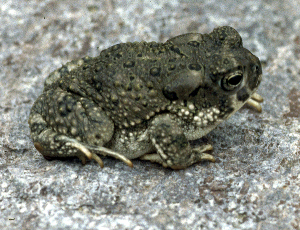Search ARMI Database
Search term(s)
Contribution Number
Search Results
Papers & Reports Range-wide Persistence of the Endangered Arroyo Toad (Anaxyrus californicus) for 20+ Years Following a Prolonged Drought
Authors: C J Hitchcock; Elizabeth A Gallegos; Adam R Backlin; Russell Barabe; Peter H Bloom; Kimberly Boss; Cheryl S Brehme; Christopher W Brown; D R Clark; Elizabeth R Clark; Kevin Cooper; Julie Donnell; Edward L Ervin; Peter Famolaro; Kim M Guilliam; Jacquelyn J Hancock; Nicholas Hess; Steven Howard; Valerie Hubbartt; Patrick Lieske; Robert E Lovich; Tritia Matsuda; Katherin Meyer-Wilkins; Kamarul Muri; Barry Nerhus; J A Nordland; Brock Ortega; Robert H Packard; Ruben Ramirez; Sam C Stewart; S Sweet; M L Warburton; Jeffrey Wells; Ryan Winkleman; Kirsten Winter; Brian Zitt; Robert N Fisher
Date: 2022-03 | Outlet: Ecology and Evolution 12:e8796 | Format: .PDF
Prolonged drought due to climate change has negatively impacted amphibians in southern California, U.S.A. Due to the severity and length of the current drought,
agencies and researchers had growing concern for the persistence of the arroyo toad (Anaxyrus californicus), an endangered endemic amphibian in this region. Range-wide surveys for this species had not been conducted for at least 20 years. In 2017–2020, we conducted collaborative surveys for arroyo toads at historical locations. We surveyed 88 of the 115 total sites having historical records and confirmed that the arroyo toad is currently extant in at least 61 of 88 sites and 20 of 25 historically occupied watersheds. We did not detect toads at almost a third of the surveyed sites but did detect toads at 18 of 19 specific sites delineated in the 1999 Recovery Plan to meet one of four downlisting criteria. Arroyo toads are estimated to live 7–8 years, making populations susceptible to prolonged drought. Drought is estimated to increase in frequency and duration with climate change. Mitigation strategies for drought impacts, invasive aquatic species, altered flow regimes, and other anthropogenic effects could be the most beneficial strategies for toad conservation and may also provide simultaneous benefits to several other native species that share the same habitat.
agencies and researchers had growing concern for the persistence of the arroyo toad (Anaxyrus californicus), an endangered endemic amphibian in this region. Range-wide surveys for this species had not been conducted for at least 20 years. In 2017–2020, we conducted collaborative surveys for arroyo toads at historical locations. We surveyed 88 of the 115 total sites having historical records and confirmed that the arroyo toad is currently extant in at least 61 of 88 sites and 20 of 25 historically occupied watersheds. We did not detect toads at almost a third of the surveyed sites but did detect toads at 18 of 19 specific sites delineated in the 1999 Recovery Plan to meet one of four downlisting criteria. Arroyo toads are estimated to live 7–8 years, making populations susceptible to prolonged drought. Drought is estimated to increase in frequency and duration with climate change. Mitigation strategies for drought impacts, invasive aquatic species, altered flow regimes, and other anthropogenic effects could be the most beneficial strategies for toad conservation and may also provide simultaneous benefits to several other native species that share the same habitat.

